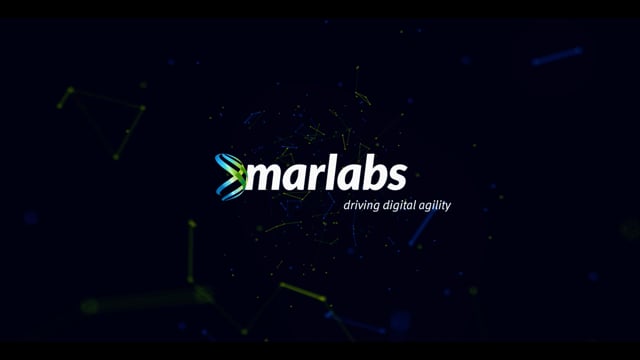The business world has moved from the traditional economies of scale to the current economies of speed. The need for faster, agile, and nimble application development methodologies are imperative. With the growing popularity of low-code / no-code as well as generative AI, the expectations from product and business owners have increased.
Rapid Application Development (RAD), is a dynamic approach that prioritizes speed, flexibility, and user feedback to deliver functional applications quickly. This blog delves into the world of RAD, exploring its core principles, its role in the software development lifecycle, and how to determine if it’s the right fit for your project.
What is Rapid Application Development?
RAD is an agile software development methodology that emphasizes iterative development, rapid prototyping, and continuous user feedback. Unlike the linear approach of traditional models where requirements are locked in early on, RAD embraces a more cyclical process. It breaks down the development lifecycle into smaller, manageable phases, allowing for course correction and adjustments based on user input throughout the process.
Why is Rapid Application Development Important?
In the software development universe, you might be familiar with Agile, DevOps, Waterfall and the like. Rapid Application Development is another such methodology. The uniqueness of RAD lies in its ability to address the limitations of traditional methodologies. Here’s how RAD stands out:
- Reduced Time to Market: By prioritizing rapid prototyping and iterative development, RAD allows for quicker delivery of functional software. This is crucial in today's competitive market where being first to market can be a significant advantage.
- Enhanced User Involvement: User feedback is central to the RAD process. Early and ongoing user involvement ensures the developed application aligns with their needs and expectations, leading to a higher chance of user adoption.
- Flexibility and Adaptability: The iterative nature of RAD allows for course correction based on user feedback. This flexibility is critical in projects where requirements may evolve, or where new features and functionalities emerge during the development process.
- Reduced Risk of Project Failure: By continuously incorporating user feedback, RAD helps identify and address potential issues early on. This reduces the risk of costly rework and project failure later in the development cycle.
Benefits of Using Rapid Application Development
Beyond these, RAD offers several other benefits:
- Collaborative Development: The iterative nature of RAD fosters closer collaboration between developers, designers, and stakeholders, leading to a more cohesive development process.
- Increased ROI: Faster development cycles and reduced rework translate to a better return on investment (ROI) for software projects.
- Enhanced User Satisfaction: User involvement throughout the development process ensures the final product closely aligns with user needs, leading to higher user satisfaction.
Steps Involved in the Rapid Application Development Process
RAD typically follows a well-defined set of steps:
- Business Requirements Gathering: The first step involves gathering and defining the core business needs and objectives for the application.
- Rapid Prototyping: Based on the gathered requirements, a basic, non-functional prototype is quickly developed. This prototype serves as a visual representation of the application's core functionalities.
- User Feedback and Iteration: The prototype is presented to stakeholders and users for their feedback. This feedback is then incorporated into the development process, refining and iterating on the prototype until it meets user expectations.
- Development: Once a satisfactory prototype is established, the actual development of the application begins. This stage involves coding, building functionalities, and integrating components.
- Testing and Deployment: The developed application undergoes rigorous testing to ensure functionality and identify bugs. Once thoroughly tested, the application is deployed for user access.
- Maintenance and Support: Even after deployment, the RAD process emphasizes ongoing user feedback and maintenance. This ensures continued improvement and adaptation of the application based on user needs.
Quick Comparisons
Aspect | Agile | Waterfall | DevOps | RAD |
Development Style | Iterative & incremental | Sequential & linear | Collaborative & Automated | Prototype-driven |
Project Requirements | Evolving | Fixed & clear | Varies | Evolving |
Feedback | Continuous & early | Limited & late | Continuous & Early | Early & frequent |
Testing | Integrated throughout | Separate testing phase | Integrated throughout | Part of prototyping |
Deployment | Frequent releases | Single major release | Frequent releases | Frequent iterations |
Is Rapid Application Development Right for Your Need?
While RAD offers numerous benefits, it is important to map those benefits to your specific requirements. Here are some factors to consider when deciding if RAD is the right approach for your project:
- Project Complexity: RAD is well-suited for projects of moderate complexity where requirements are relatively well-defined at the outset. Highly complex projects with ever-evolving needs may benefit from a more structured approach.
- Project Timeline: If a tight deadline necessitates a faster time to market, RAD's iterative development cycles can be highly advantageous.
- User Involvement: RAD thrives on continuous user feedback. If you have access to readily available and engaged users, RAD can be a great choice.
Marlabs for Custom Application Development
Marlabs designs and develops digital solutions with data at the center. We leverage our deep data expertise and cutting-edge technology to empower businesses with actionable insights and achieve improved digital outcomes. Marlabs’ data-first approach intersects with custom application development, AI & analytics, digital product engineering, and advisory services to build and scale digital solutions. We work with leading companies around the world to make operations sleeker, keep customers closer, transform data into decisions, boost legacy system performance, and seize novel opportunities in new digital revenue streams.






